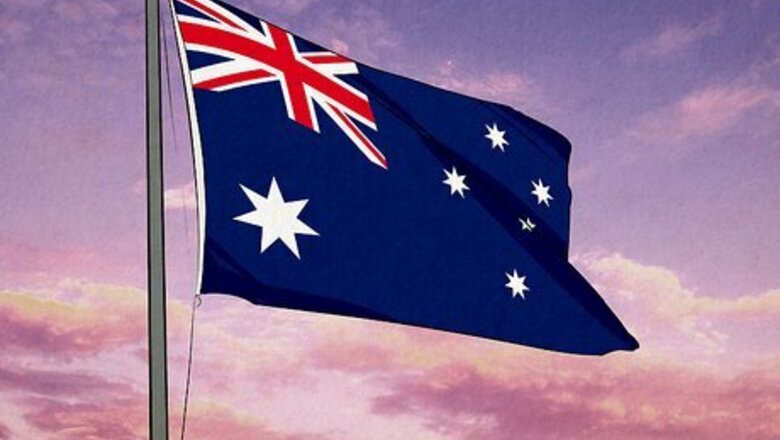
views
Australia
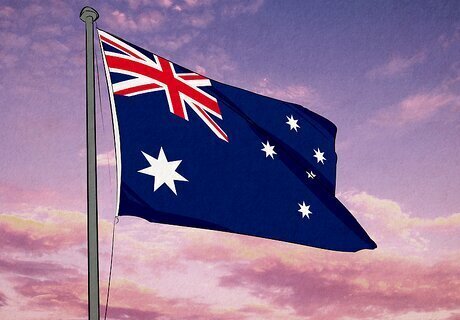
The Australian flag has three main elements. First, there’s the Union Jack in the upper left corner, a red, white, and blue symbol representing Australia’s historical ties to the United Kingdom. To the right, there are five stars representing the Southern Cross, a prominent constellation in the Southern Hemisphere. Finally, underneath the Union Jack, there’s the Commonwealth Star, a seven-point star representing the six states and the combined territories of Australia.
Cambodia
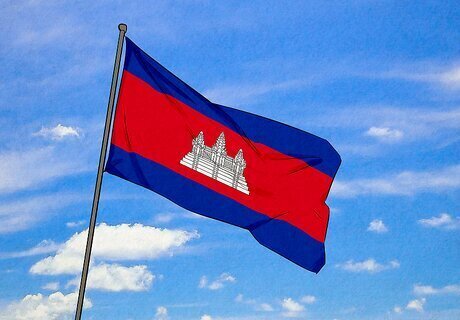
The Cambodian Flag has a horizontal blue stripe across the top and the bottom and a larger red stripe across the middle. In the center of the red strip, there’s a white image of Angkor Wat, a famous Hindu-Buddhist temple in the country. Red represents the bravery of the Cambodian nation, blue represents the unity of the Cambodian people as well as the nation’s monarchy, and the white color of the temple represents the country’s religious beliefs and purity.
Chile
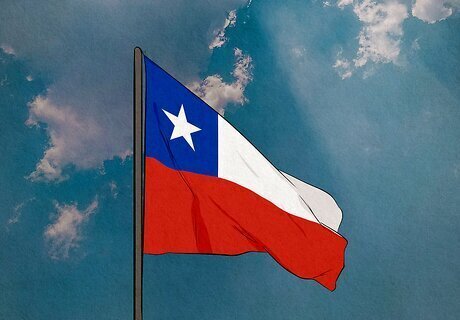
In the top left corner of the flag of Chile, there’s a blue square with a five-pointed white star in the center. The blue color represents the sky, and the white star represents a guide toward progress and honor. To the right of this, there’s a horizontal white stripe, symbolizing the snow on the tops of the Andes Mountains. The bottom half of the flag is a horizontal red stripe, which represents the blood of the citizens who have sacrificed themselves for their country.
Costa Rica
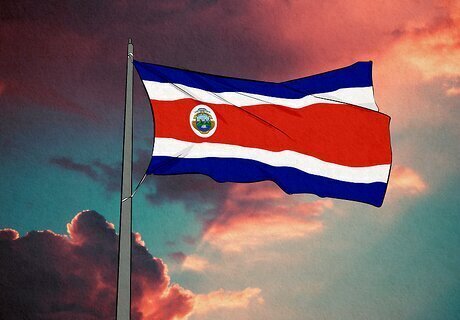
Working from the outside in, the Costa Rican flag has blue stripes across the top and bottom, then white stripes, then a thicker red stripe across the center. There’s also the national coat of arms placed on the left side of the red stripe. The blue stripes represent the sky, idealism, opportunity, and perseverance, the white stripes represent peace, wisdom, and happiness, and the red stripe represents the blood of martyrs who have died for their country, as well as the warmth and generosity of the Costa Rican people.
Cuba
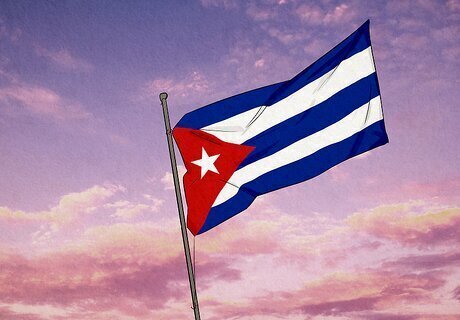
The Cuban flag has horizontal blue and white stripes (3 blue and 2 white). On the left, there’s a sideways red triangle with a five-pointed white star in the center. The blue stripes represent the three military districts of Cuba, and the white stripes represent the purity of the cause of patriotism. The star symbolizes independence.
Czech Republic
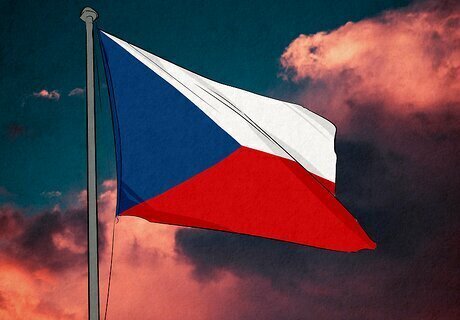
The flag of the Czech Republic has two equal horizontal bands, white on the top and red on the bottom. On the left side, there’s a sideways-facing blue triangle. The red and white colors were taken from the coat of arms from the Kingdom of Bohemia, and the blue triangle represents the three pillars of justice, truth, and loyalty.
Dominican Republic
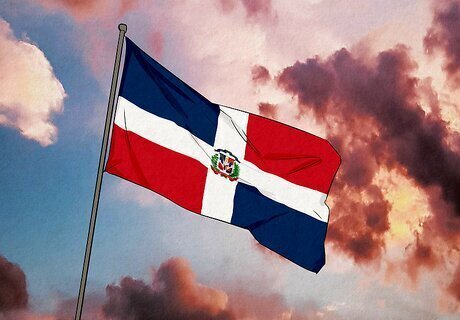
There’s a white cross across the center of the Dominican Republic’s flag, dividing the flag into four quadrants. The top left and bottom right quadrants are blue, and the top right and bottom left quadrants are red. In the center of the flag, there’s the national coat of arms, which incorporates a shield, a Bible, a cross, branches of laurel and palm, and the motto “Dios, Patria, Libertad,” which means “God, Fatherland, Liberty.”
Fiji
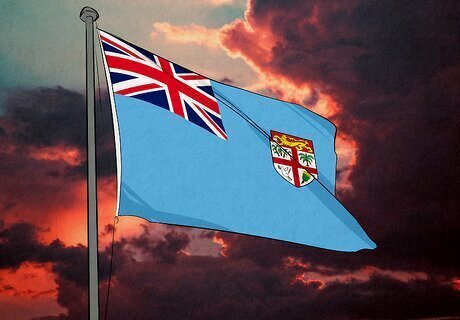
The flag of Fiji has a light blue background. In the top left corner, there’s the Union Jack (which is a red, white, and blue symbol), and to the right, there’s the national coat of arms. The Union Jack represents Fiji’s historical ties to the United Kingdom, and the coat of arms incorporates symbols like sugarcane, coconuts, bananas, and the Fiji dove.
France
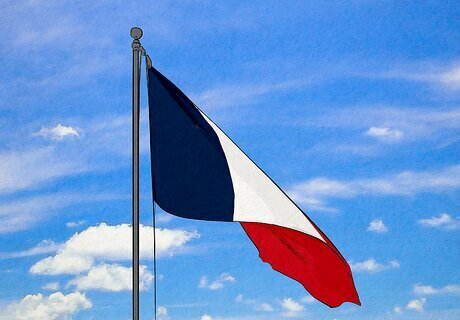
The French flag, also known as the Tricolor, is made up of three vertical stripes of equal width. From left to right, the stripes are blue, white, and red. Historically, the white stripe represented the monarchy, while the red and blue stripes were the colors of the City of Paris. It’s also thought to represent the principles of the French Revolution— liberty, equality, fraternity, democracy, secularism, and modernization.
Haiti
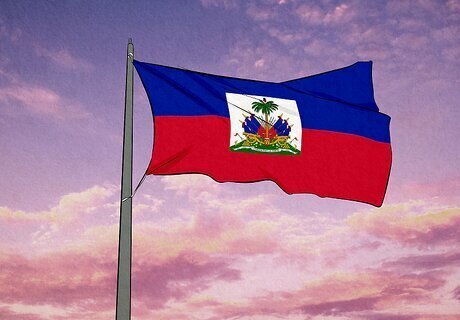
The Haitian flag has two horizontal stripes (a blue stripe across the top and a red stripe across the bottom). In the center of the flag, there’s a white square with the national coat of arms, which includes a palm tree with a liberty cap on top, surrounded by flags, rifles, hatchets, anchors, and masts. The motto “L’Union fait la force,” which means “Union makes strength,” is also included.
Iceland
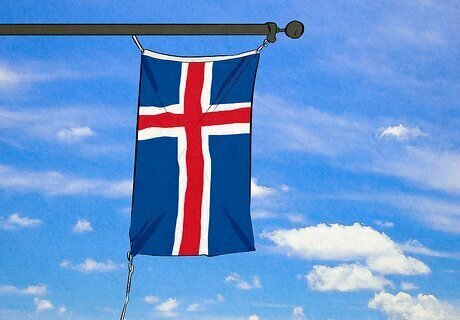
The flag of Iceland has a blue background with a sideways-facing red cross with a white border. The blue represents Iceland’s mountains and the Atlantic ocean, the white represents glaciers and snow, and the red represents the magma of Iceland’s many volcanoes.
Laos
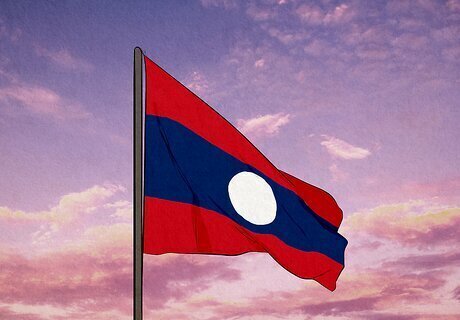
The Flag of Laos has red horizontal stripes across the top and bottom, and a thicker blue stripe across the middle. In the center of the blue stripe, there’s a white circle. The white circle honors the Japanese, who supported the Lao independence movement in World War II, and it also symbolizes the bright future ahead for the country. The red symbolizes the blood of those who seek freedom and independence, and the blue represents future prosperity.
Liberia
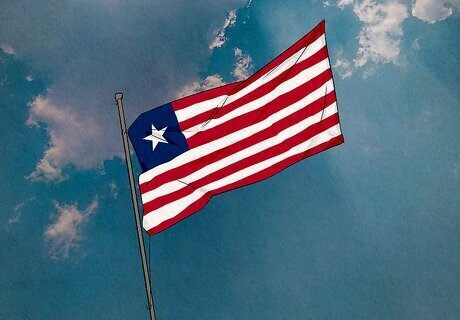
Liberia’s flag has 11 horizontal stripes (6 red and 5 white), representing the number of men who signed the Liberian Declaration of Independence. In the top left corner, there’s a blue square with a white five-pointed star. In 1847, the star replaced a cross in the previous flag design, and it represented Liberia’s status as the only independent Western-style state in Africa.
Luxembourg
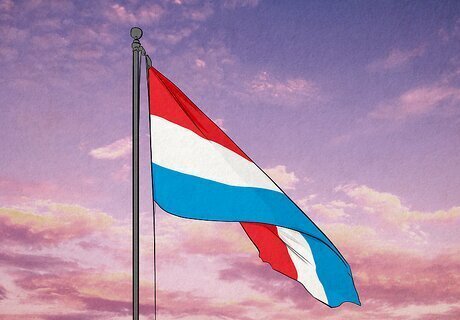
The flag of Luxembourg has three equal horizontal stripes: red at the top, white in the middle, and light blue across the bottom. These colors come from the House of Luxembourg’s coat of arms, but they also have symbolic meanings. The red represents vibrancy, revolution, and power, the white represents harmony, peace, and the innocence of the people, and the blue represents perseverance.
Malaysia
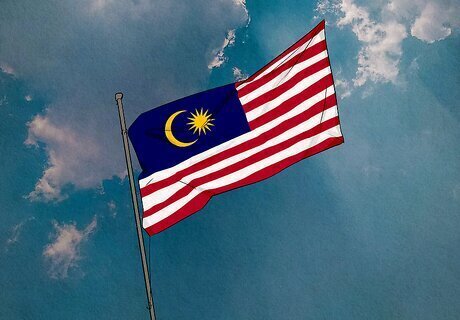
The Malaysian flag has 14 alternating red and white horizontal stripes. In the top left corner, there’s a blue rectangle with an 11-pointed yellow star, representing the nation's 11 states, and a crescent, representing the nation’s majority Muslim population.
Nepal
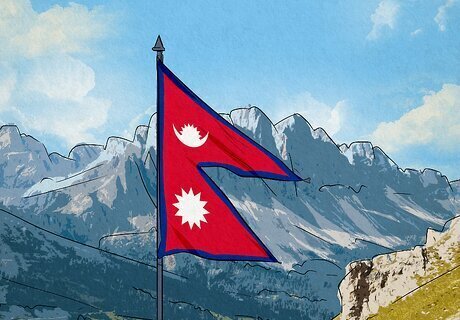
The flag of Nepal is pretty unique—it’s made up of two united, triangular-shaped pendants, instead of being rectangular-shaped like many other national flags. The pendants are red with a thin blue border around them. The top pendant has a white symbol representing the moon, and the bottom pendant has a white symbol representing the sun.
Netherlands
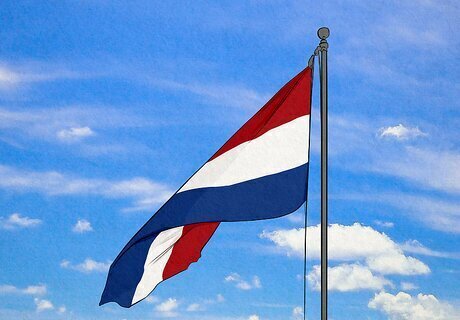
The flag of the Netherlands consists of three horizontal stripes: red at the top, white in the middle, and blue in the middle. Originally, the red stripe was orange, representing the colors on the coat of arms of Prince William of Orange, but because orange dye was unstable and would eventually turn red, the design was eventually changed.
New Zealand
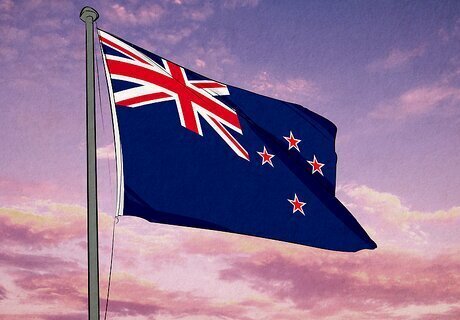
New Zealand’s flag has a blue background with a Union Jack in the top left-hand corner. To the right, there are four stars representing the Southern Cross and the country’s location in the South Pacific Ocean. The blue color of the flag is also symbolically linked to the sea and sky surrounding the island.
Norway
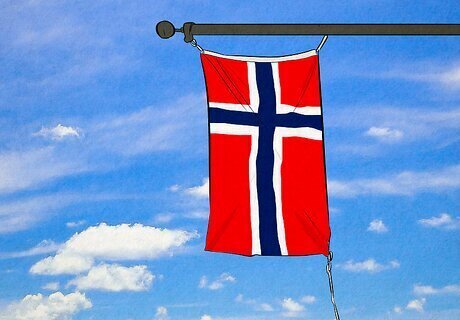
Norway’s flag features a sideways blue cross with a white outline against a red background. The overall design was based on the Danish flag and represents the union with the Kingdom of Denmark from 1397 to 1814, and the blue cross symbolizes the union between Norway and Sweden from 1814 to 1905.
North Korea
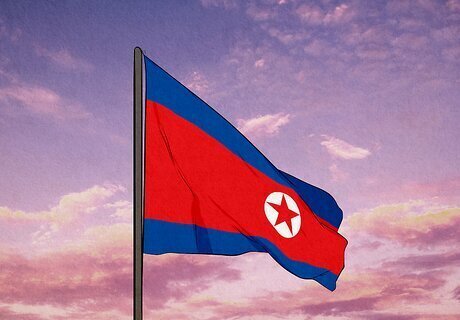
The North Korean flag has thin blue horizontal bands across the top and bottom, followed by thinner white bands, then a thick red band across the center. On the red band, there’s also a white circle with a red five-pointed star. The red stripe and star are symbols of the country’s communist system. The blue is said to symbolize peace, and the white stripes represent purity, strength, and dignity.
Panama
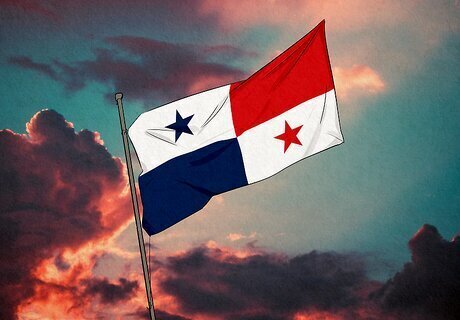
The Panamanian flag is split up into four quadrants. Going clockwise from the top left corner, there’s a white quadrant with a blue five-pointed star, a red quadrant, a white quadrant with a red five-pointed star, and a blue quadrant. The two star symbols were meant to represent the two major political parties (red for liberals and blue for conservatives), and the white color was meant to represent peace between them.
Paraguay
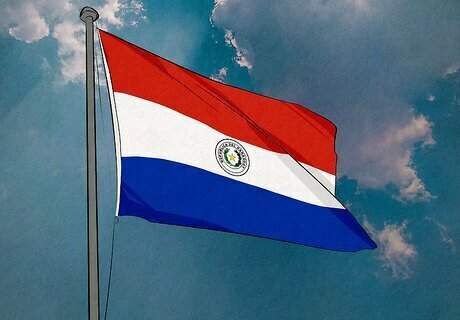
The flag of Paraguay has three horizontal stripes (red across the top, white in the middle, and blue at the bottom), with the national coat of arms in the center. On the backside of the flag, the coat of arms is replaced by the seal of the treasury, which makes it unique among other national flags.
Philippines
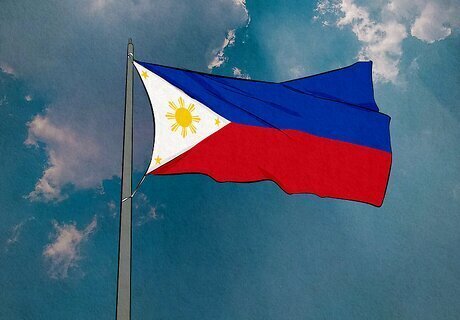
The flag of the Philippines has two horizontal stripes—blue on top, symbolizing the willingness to sacrifice oneself for freedom, and red on the bottom, symbolizing courage. There’s a white triangle pendant on the left-hand side with a golden sun symbol and three yellow stars. The white triangle symbolizes liberty, and the three stars symbolize the three main areas in the Philippines (the Luzon group of islands to the north, the Visayan group to the south, and the main island of Mindanao).
Russia
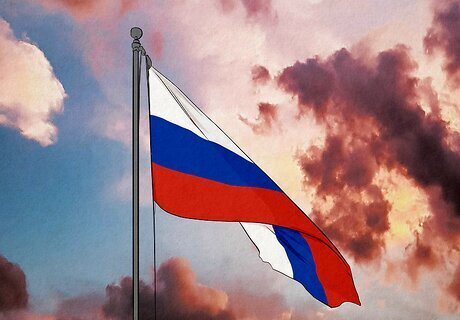
The Russian flag consists of three horizontal stripes. The top stripe is white, the middle stripe is blue, and the bottom stripe is red. White symbolizes purity, independence and peace, blue represents faith, devotion, and justice, and red symbolizes courage, strength, and bloodshed for the Motherland.
Samoa
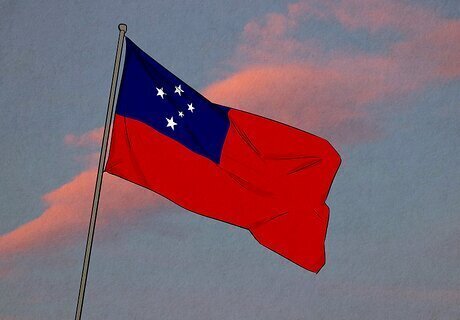
The Samoan flag has a red background with a blue rectangle in the top left corner. There are five white stars on the blue rectangle, representing the Southern Cross constellation. The white color on the flag is said to represent purity, and the red color stands for courage.
Serbia
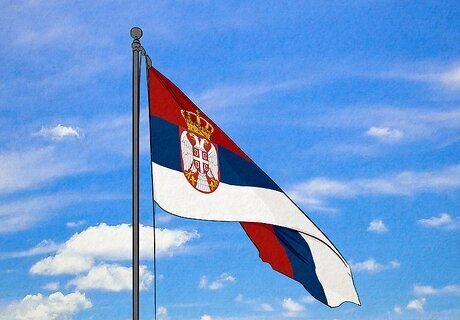
The flag of Serbia has three horizontal stripes: red at the top, blue in the middle, and white at the bottom. The flag also features the national coat of arms, which extends into all three stripes. The coat of arms includes a white double-headed eagle with a fleur-de-lis next to each talon.
Slovakia
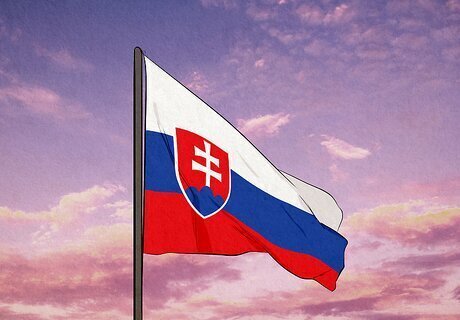
The Slovakian flag consists of three horizontal stripes. There’s a white stripe across the top, a blue stripe in the middle, and a red stripe at the bottom. There’s an off-center coat of arms on the left side of the flag (a red shield with a white cross emerging from three blue hills).
Slovenia
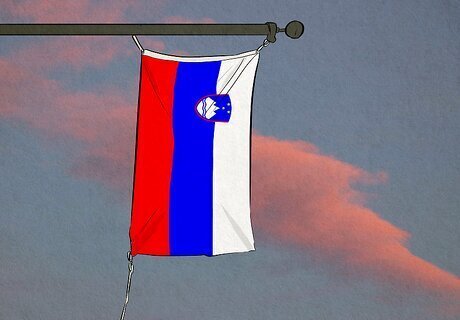
The flag of Slovenia has three horizontal stripes: white across the top, blue across the middle, and red across the bottom. In the upper right corner, there’s the national coat of arms, which is a blue shield featuring three white mountains and three yellow stars. The mountain symbol represents Triglav, the highest mountain peak of Slovenia.
South Korea
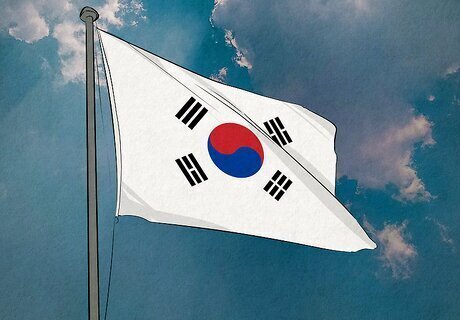
The South Korean flag has a white background, representing peace. It features a t’aegŭk (a disk made up of red and blue comma shapes) in the center. The emblem represents the duality of the universe and is reminiscent of a yin-yang symbol. Surrounding the disk, there are four groups of black bars which represent a few different things (including the sun, moon, earth, and heaven, the four cardinal directions, and the four seasons).
Thaliand
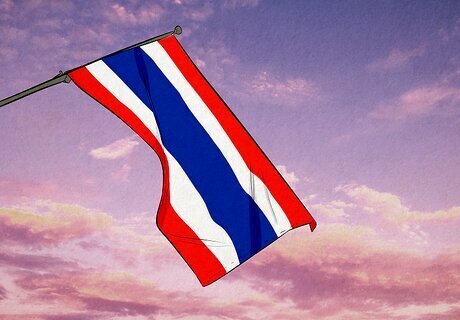
The flag of Thailand has five horizontal stripes. From the outside in, there are red stripes at the top and bottom, then white stripes, then a thicker blue stripe in the center. The red color symbolizes the nation and the blood of life, the white color represents Buddhism and purity, and the blue color represents the monarchy.
United Kingdom
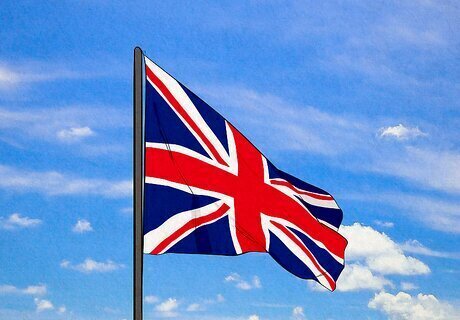
Also known as the Union Jack, the flag of the U.K. is a combination of three crosses: the cross of St. George (representing England), the cross of St. Andrew (representing Scotland), and the cross of St. Patrick (representing Ireland).
United States
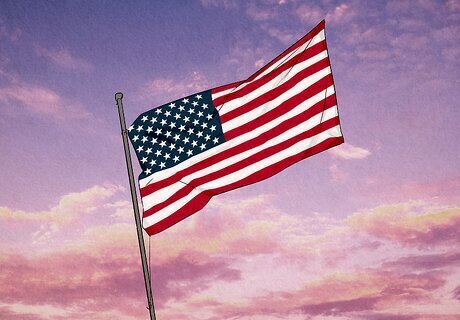
The flag of the United States features 13 horizontal red and white stripes, representing the original 13 colonies. In the upper left corner, there are 50 white stars against a blue rectangular background, representing the 50 states that make up the nation currently. The red on the flag represents valor and bravery, the white represents purity and innocence, and the blue represents perseverance, vigilance, and justice.











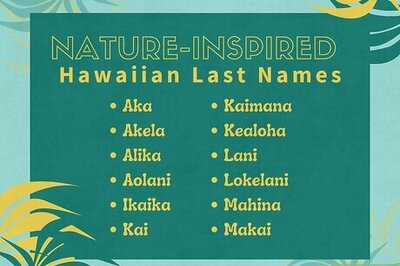
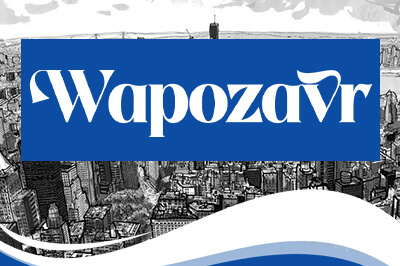
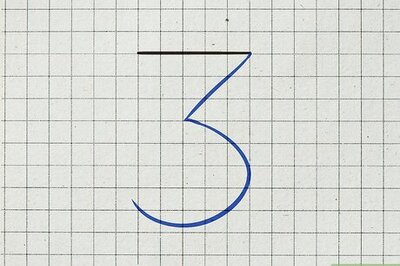



Comments
0 comment